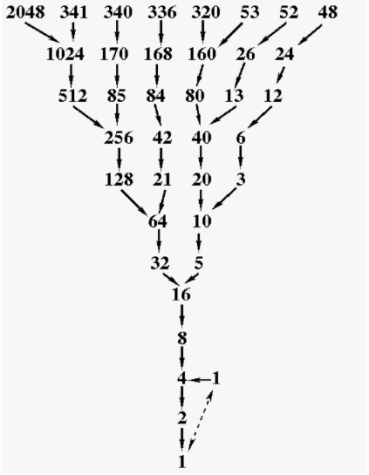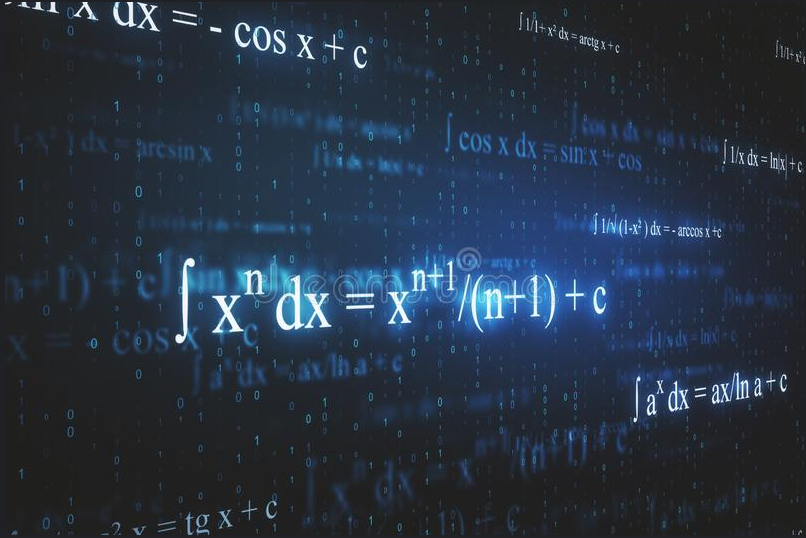The Unsolvable Math Problem
April 13, 2022
We’ve all come across a math problem that we think we can’t solve – whether it turns out to be a simple answer or complicated. Then, we wonder, Why wasn’t I able to solve this problem? The thing is, a simple math problem that seemingly has no answer does have an answer. And another simple math problem, which seemingly has an answer, has stumped the greatest minds for over a century: The Collatz Conjecture.
The Conjecture
What is the Collatz Conjecture? To start, it was first proposed by Lothar Collatz. The math problem seems to be a simple thing that anybody with basic knowledge of algebra can solve. However, people have been challenged for years trying to solve the conjecture.
Be warned: before learning about this conjecture, take note. You will be tempted to try and solve it. You will be tempted to spend time on this problem. Trust me, even I was tempted to solve this conjecture, and I still am. But don’t – you’ll see why.
The simple problem that has been confusing mathematicians is, well, simple. Start with any number. If the number is odd, multiply it by 3 and add one. If the number is even, divide it by two. After that, reapply the ‘if even… if odd…’ process to your result. If you keep on continuing the loops, 3x+1, and dividing by two, your results will end up in a loop. 4, 2, 1. 4, 2, 1… forever, on until the end of time. Four is even, so divide it by two. Four divided by two is two, and two is even. Divide two by two, you get one. One multiplied by three is three, plus one is four. Four divided by two is two… you get what I mean now.

You might think, “Well, I’ve only tried with one number. What about another?” The answer to your question is: don’t do it. Mathematicians have tested all the numbers up to 2 to the 68th power: equivalent to around 300 quintillion! So if you wanted to test a new number, that’s probably a good starting point.
There are two scenarios where the conjecture could be proven false – but it would be very difficult for you to go out and find it. One scenario is where there’s a number that just keeps shooting up to infinity, climbing higher, and higher, and never coming down to 4, 2, 1. The other scenario is where there’s a loop of numbers unconnected to the original 4, 2, 1 loop, but that’s unlikely. Mathematicians have already figured out (through all the numbers they’ve tested already) that the unconnected loop must be at least 186 billion results long! Mathematicians, who have tested these scenarios, have not found either of these scenarios to be true yet.
You may ask, “What happens when you try to solve the conjecture with a negative number?” Like using positive numbers, you fall into a loop. However, it’s not only one loop, nor two. There are three loops that you can reach when applying the Collatz Conjecture to a negative number. One starts at -1, another starts at -5, and the last begins at -17.
You may think that people should have found a counterexample to the conjecture by now. However, it’s not all that expected. For example, one conjecture, the Polya conjecture (proposed in 1919) was proven false in 1958 by C. Brian Hasselgrove. The thing is, this was only proven false at the value of 1.845 times 10361 power – or around 10340 times larger than what people have already discovered of the Collatz Conjecture. So it’s not hopeless that there’s a counterexample, yet it would be valued at a very high number. But for now, all the numbers tested have obeyed the laws of 3x+1.
All in all, the Collatz Conjecture is a supremely interesting math problem – an equation so simple, yet so unsolvable. It loops around forever, seemingly no matter what number you use. Mathematicians for centuries have tried to disprove it but failed. So don’t waste your time solving for hundreds of numbers, but maybe try one or two numbers and see if it disproves the conjecture. Who knows? You could make a mathematical breakthrough! Just don’t be late for dinner.
Works Cited
Honner, Patrick. “The Simple Math Problem We Still Cannot Solve.” Quanta Magazine, 22 Sept. 2020, www.quantamagazine.org/why-mathematicians-still-can’t-solve-the-collatz-conjecture-20200922.
Hu, Zuojun. “The Analysis of Convergence for the 3X+1 Problem and Crandall Conjecture for the AX+1 Problem.” Scientific Research: An Academic Publisher, Scientific Research, www.scirp.org/journal/paperinformation.aspx?paperid=109243. Accessed 21 Mar. 2022.
“Why Mathematicians Still Can’t Solve the Collatz Conjecture.” YouTube, uploaded by Veritasium, 30 July 2021, www.youtube.com/watch?v=094y1Z2wpJg.





